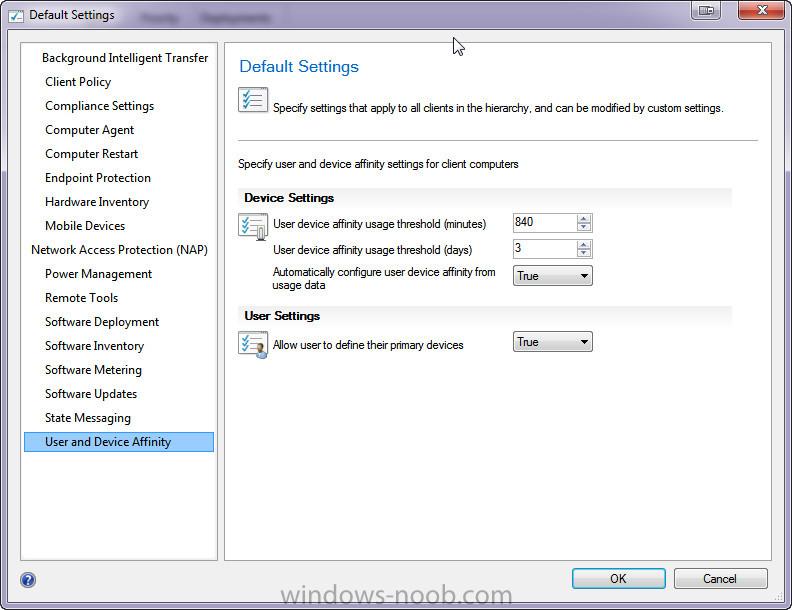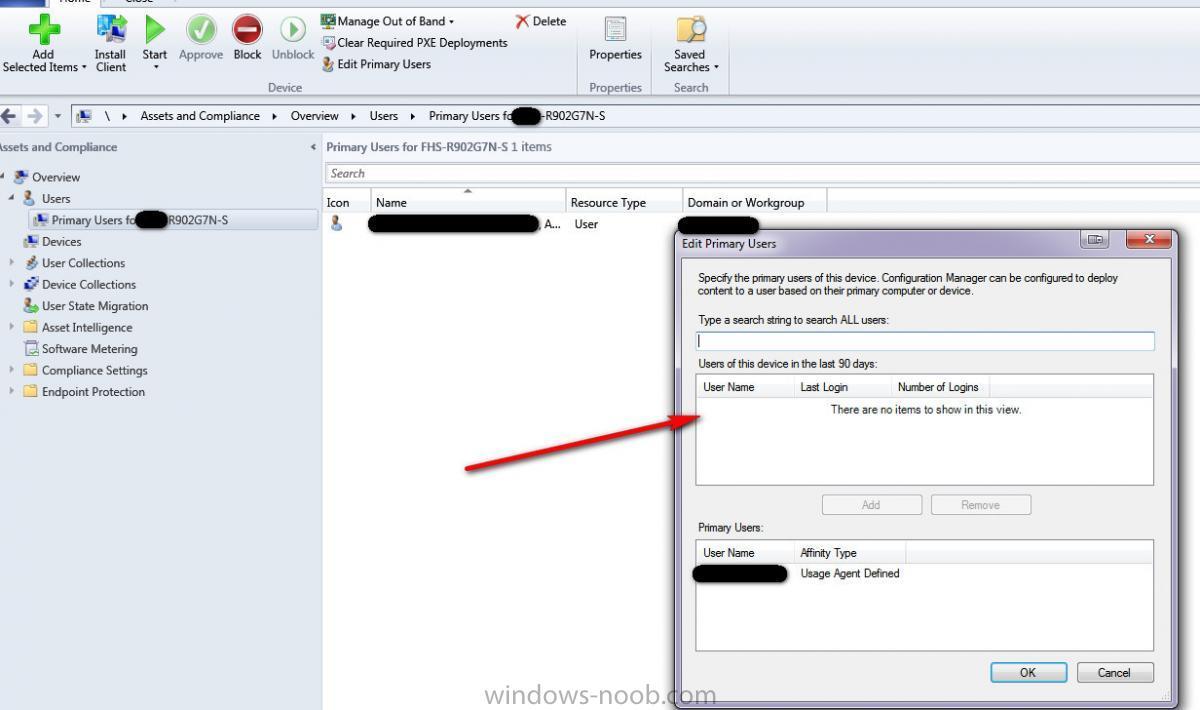-
Posts
139 -
Joined
-
Last visited
Everything posted by tmiller_hockey
-
I also would love to see a SCOM 2012 config guide/tips and was disappointed that there's no dedicated SCOM 2012 section.
-
It would be pretty straight forward as an application. I believe the install is an msi and symantec will have switches and variables to input for any config. My question is why would you want to use SEP which is a resource heavy product that costs money. Forefront is quite better and I believe if you're licensed for SCCM 2012 then you are licensed for the Forefront as well. We got rid of ESET which we were paying extra for and went to Forefront.
-

Endpoint Protection Deployment with Exclusions
tmiller_hockey replied to MagnumVP's topic in Configuration Manager 2012
This may help you! http://configmgrblog.com/2012/07/09/out-of-the-box-endpoint-protection-2012-policy-templates/- 2 replies
-
- endpoint
- deployment
-
(and 3 more)
Tagged with:
-

Windows 7 64Bit Capture Fails
tmiller_hockey replied to dobsonl's topic in Configuration Manager 2012
I recreated the Boot Images and redeployed them. I now have F8 access. I obtained the log and the only thing I notice is the following: !sVolumeID.empty(), HRESULT=80004005 -

Windows 7 64Bit Capture Fails
tmiller_hockey replied to dobsonl's topic in Configuration Manager 2012
Can't get to the log. Press F8 and no command prompt even though I have command support enabled. Other ideas?? -

Windows 7 64Bit Capture Fails
tmiller_hockey replied to dobsonl's topic in Configuration Manager 2012
Why would you need drivers in a Hyper-V VM? I'm having this problem as well. -

TS failed 0x80004005 - while retrieving policy
tmiller_hockey replied to boyjaew2's topic in Configuration Manager 2012
I'm having the same thing now in a Hyper-V VM that I'm trying to build and capture Server 2008 R2. I get the error during the Apply Operating System portion but when it happens it is too fast for me to see if it slips by that portion to the next or not. I cannot F8 for some reason even though the command testing is checked. Don't know if that's related to Hyper-V or not. Since I can't get to the log I'm sort of stuck. -

OSD: WinPe resets at network driver load repeatedly
tmiller_hockey replied to ABAdmin's topic in Configuration Manager 2012
There was another post on this, yes the BIOS clock makes all the difference in the world. Ensure it is set correctly and everything will go smooth. Glad you got it worked out. Too bad I didn't see your post beforehand to give you the answer without having to figure it out for yourself. But at least now you know -

Program Computer shutdown and wake up
tmiller_hockey replied to Gougy's topic in Configuration Manager 2012
I don't see any options in my console for shutdown and there aren't any in the link you provided. Sleep yes, shutdown no. In my case, I need the on the fly ability to shutdown computers due to Energy Management which is why the console extensions work for me. -

Our network user guide for SCCM/Vanilla in our school
tmiller_hockey replied to nry's topic in Configuration Manager 2012
Kingen, it depends on the environment. Some schools have a SIS (Student Information System) that is separate from AD. In our case, administrators or registration clerks entered the data in the system and we exported the data out to import into AD. nry, I'm with you on being an IT function. IMO, non IT personnel do not need access to AD for any reason. Leaving it with the IT Department means you don't have to go out and configure the additional security to allow non IT people to add accounts. From the sounds of the size of your organization, the benefit of doing it yourself outweighs changing security. -

Program Computer shutdown and wake up
tmiller_hockey replied to Gougy's topic in Configuration Manager 2012
CM Power Management won't do this. Gougy posted the link to Dan Ireland's Config Manager Console Extensions which work for CM12 and will do what you want. I tested these for him while he was developing them for CM12. Great set of tools!! -

SCCM2012 Automatic Computername in OSD^
tmiller_hockey replied to easybernd's topic in Configuration Manager 2012
We do this as well, pulling the service tag from the Dell's and the serial number from the Lenovo's with a short vbScript to populate OSDComputerName -

Disk sizing for a new 2012 install
tmiller_hockey replied to Kingskawn's topic in Configuration Manager 2012
I'll disagree with them on that point. I've got a site running 10k users and 6k computers. I'm running overkill. Our site server is virtual with one processor and 16GB, usage never tops more than 4.5GB. Our SQL is offbox and it is also virtual and runs 32GB but usually stays around 16GB usage. My specs according to MSFT will support 100,000 clients. -

User Experience for Software Updates Help
tmiller_hockey replied to dcslick's topic in Configuration Manager 2012
I've been wondering sort of the same thing. We don't want to force a restart during working hours and don't really want to notify them either. -

User Affinity/Last Login Info
tmiller_hockey replied to tmiller_hockey's topic in Configuration Manager 2012
Actually it is a valid CM12 question when you consider the above image which should display logon information for the last 90 days. I know AD has the Last Login and Last Login Timestamp which often differ quite a bit. In this particular case the difference between them is 4 days. Also, some of my machines do display info in the image shown for users within the last 90 days. I'm leaning towards this being a user affinity problem as when it is set it is forcing the primary user of the device in and not worrying about anything else. -

Retry failed application deployment
tmiller_hockey replied to nicka's topic in Configuration Manager 2012
Dan Ireland created the ConfigMgr extensions for SCCM 2012. There is an option in his extensions that will re-run an advertisement/deployment on a computer. They've worked great for me. You can get them here. -

Using SCCM as a tool for the helpdesk
tmiller_hockey replied to Chadwill's topic in Configuration Manager 2012
We use User Affinity to determine primary users/devices and this works very well for our helpdesk. In a user collection, we can click on the user, select primary device and all is well. In the case which it can't determine a primary device, usually right clicking the user and selecting edit primary devices will display a list of machines they login to. From there it is pretty easy to determine which one they are on. Hope that helps. -

Report To Display Last User Login (User/Date&Time)
tmiller_hockey replied to tmiller_hockey's question in Reports
That actually doesn't give me a true result of what I'm looking for. We need this information to use with laptops that have been stolen so I need a pretty definite user/time of when the last login was. -
I posed this question originally as a report question but figured I'd lay it out a different way in this one. Here's a scenario we encounter: Student Laptop gets stolen. We need to determine when the last time the machine was seen on the network and who the last person that was logged into it is. We have user affinity enabled based on the following parameters shown in the attachment. When searching the device and selecting primary user, it will display the primary user information which is good. After right clicking the listing in the column and selecting "Edit Primary Users" there is a section in the resulting dialog box that has an area for users who've logged into the machine in the past 90 days which is blank. See attachment 2. Why is this information not available and is there a way we can obtain it?
-

TS failed 0x80004005 - while retrieving policy
tmiller_hockey replied to boyjaew2's topic in Configuration Manager 2012
Yes, it is a date/time bug. I had this happen as well and made sure all our techs know to check that now! -
I've had sort of the same thing happen but was due to the machine not being removed from AD before imaging.
-

Best practise for Patch deployments
tmiller_hockey replied to kabirhussein's topic in Configuration Manager 2012
This is the guide I used by Brian Thorp. SCCM 2012 - Automatically Updating Systems (1).pdf- 4 replies
-
- sccm patch
- sccm ADR
-
(and 1 more)
Tagged with:
-
Can someone give me some guidance. I am trying to use Report Builder 3.0 to create some custom reports. I found a tutorial here which includes a sample report for Endpoint done in Report Builder 3.0. When trying to run the report in Report Builder, I get a message that the user I'm using doesn't have permission to do this. It is a domain admin which has full rights under SQL management studio. It will allow me to publish the report but normal users cannot run the report, it gives errors although logged into the server as that same domain admin, I am able to open the reporting services website and run the report.





